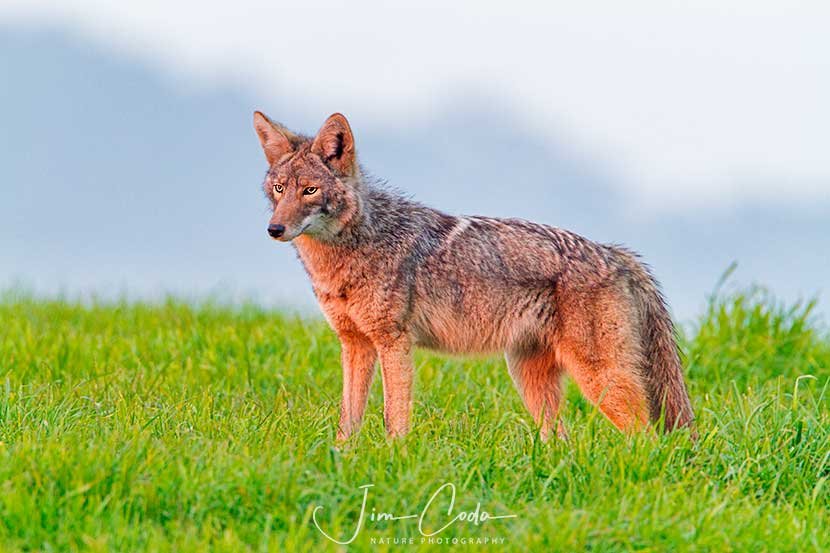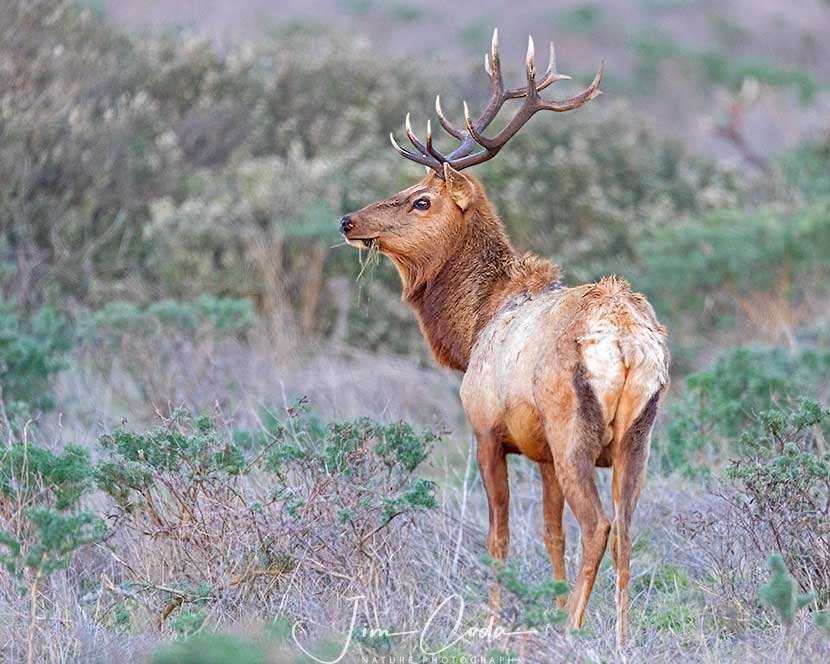Coyote, Point Reyes National Seashore

Coyote in the Ranching Area of Point Reyes National Seashore.
This coyote is standing in a ranch pasture at Point Reyes National Seashore. Between now and July 14, the Park Service is going to decide which of six alternatives to adopt for management of 28,000 acres of land owned by the Park Service/United States at Point Reyes National Seashore and the adjacent Golden Gate NRA and dedicated for decades to private ranching. The preferred alternative is to expand the ranching, especially for 18 of the 24 ranching families who live on park land with their families and employees – at subsidized rents no less. Life is going to get a lot more complicated then for the coyotes, bobcats, and the other mammalian and avian predators that live there.
The preferred alternative will provide, among other things, that each of the 18 occupied cattle ranches can also have up to 50 sheep with their lambs or 70 goats with their kids, plus 500 free-roaming chickens which will be in the pastures during the day and in mobile coops at night. Now, the ranchers can only have beef and dairy cows, which are way too big for any Point Reyes predator to bother. These small domestic animals will be protected by livestock guardian dogs which are capable of killing coyotes and the other predators.
The leases will provide that ranchers can’t kill or harm predators. However, the leases also provide that where predation occurs, the rancher can report it to the Park Service and the Park Service will decide what action to take. If NPS says “no” to killing, what’s a rancher to do? Well, there’s the old “3S’s” maxim – shoot, shovel and shut up.
And you thought national park units were established for the protection and preservation of nature, including wildlife. Guess again. What predominates in the National Park Service thinking is maximizing tourism (especially for concessioners) and emphasizing viewsheds for those tourists. What is living in those viewsheds has never been on the Park Service’s radar. Most former Park Service employees will tell you this or, if you don’t know one, read this book by a retired NPS employee, “Preserving Nature in the National Parks” by Richard Sellars.


